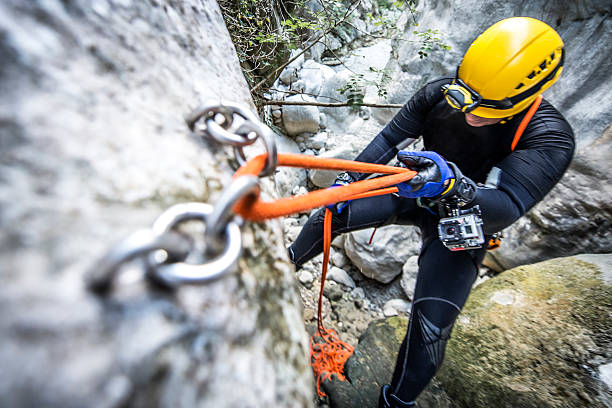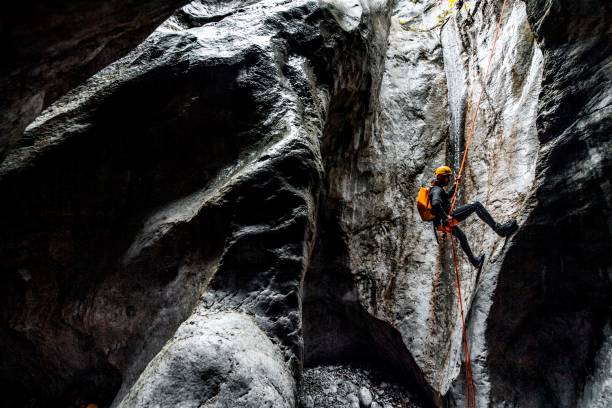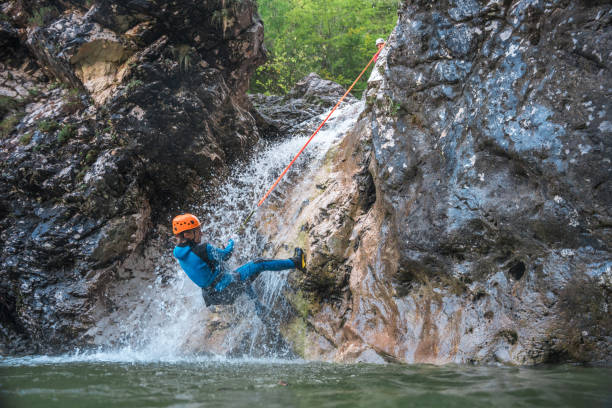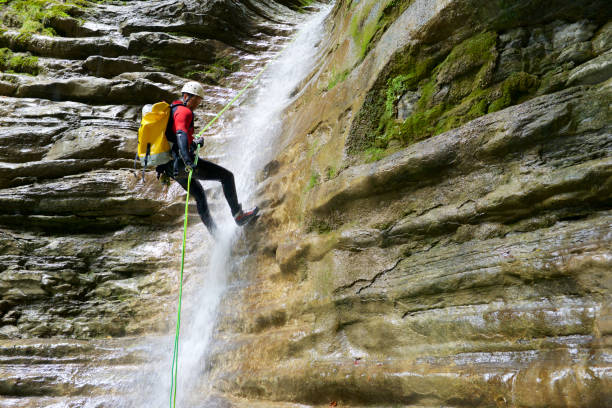With the growing popularity of outdoor sports, canyoning is gradually gaining mainstream attention. It combines hiking, climbing, swimming, diving, rappelling, and other techniques, posing an extreme challenge to human endurance and skills. During this process, the rope system is a core safety tool, and how it is selected and used directly impacts the safety and efficiency of the activity.
A canyoning rope is a type of semi-static rope (EN 1891) specifically designed for wet, abrasive, and rugged canyon environments. It differs from dynamic climbing ropes in its stretch characteristics and water resistance. It possesses several key features:
Low Stretch: Ensures more precise control during descent, avoiding instability caused by rebound.
High Abrasion Resistance: Withstands wear and tear from rock surfaces and friction from sand and gravel.
Water Resistance: The outer layer is treated to be waterproof, preventing water absorption and slipping.
High Strength Core Material: Materials like polyamide (nylon) or UHMWPE ensure load-bearing safety.

In practical use, different lengths and diameters of ropes are suited to different terrains. For example, lightweight ropes with a diameter under 10mm are recommended for narrow, deep canyons, while ropes over 11mm in diameter, offering higher impact resistance and load capacity, are more suitable for multi-stage waterfalls or large drop terrains.
HOATER's two canyoning ropes, the TH-JL090 and TH-JL110, are widely used in cave exploration, canyon descents, and water rescues. They are made with high-density braiding technology, making them compact, friction-resistant, and easy to handle, especially ideal for long-distance waterfall descents and vertical technical routes.
Rappelling: Using descenders (such as figure-eight devices) for stable control while descending on slippery rock faces. The rope needs to be water-resistant and non-slip, with a comfortable grip.
Belaying: The rope, combined with ascenders and protection points, provides safety backup for adventurers climbing or crossing difficult sections.
Canyon Crossing: High-buoyancy ropes are used to set up tyrolean traverses or as a haul line for people wading through water, preventing them from being swept away.
Equipment Retrieval and Emergency Rescue: Lightweight ropes, in combination with pulley systems, are used for transporting equipment or rescuing individuals during emergencies.

Pre-use Inspection: Before each use, carefully check the rope for wear, burns, cuts, hardening, or dampness to ensure it is safe to use.
Choosing the Right Rope Diameter and Length: For long-distance descents, choose ropes with a diameter of 10.5mm or more. Be sure to factor in 20% extra length as a reserve.
Avoid Prolonged Sun Exposure and Water Immersion: Although HOATER ropes have UV and water resistance, extended exposure can still affect their lifespan.
Proper Storage and Regular Retirement: After use, hang the rope to dry in a cool, ventilated place. Avoid knotting or folding. Replace ropes that have been used for over 5 years or have undergone significant impacts.
No Mixing of Ropes: Dynamic ropes cannot replace static ropes for descents. Water ropes cannot bear heavy loads. Always match equipment to the task at hand.

When selecting a canyoning rope, the rope's strength, material, and length must be carefully considered. For most canyoning activities, choosing a thicker rope is more reliable, as it can withstand larger impacts and heavier loads. Additionally, the rope's length is crucial and should be chosen based on the actual length of the canyon and terrain features. In conclusion, canyoning ropes play an essential role in mountaineering and canyoning adventures. They not only ensure the safety of climbers but are also vital tools for ensuring safe and efficient exploration. Whether climbing, descending, or crossing rivers, selecting the right rope can significantly enhance the safety and comfort of the adventure.
